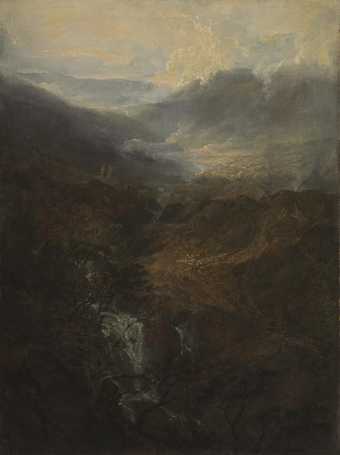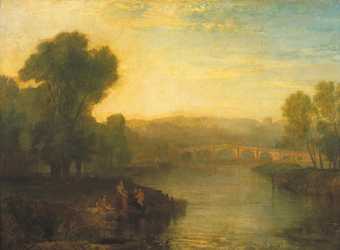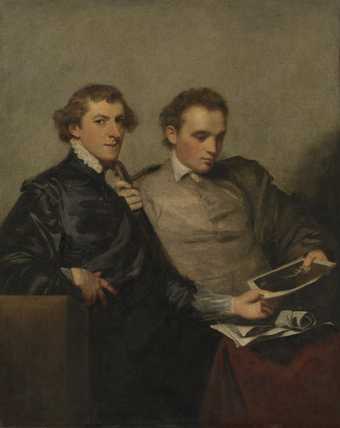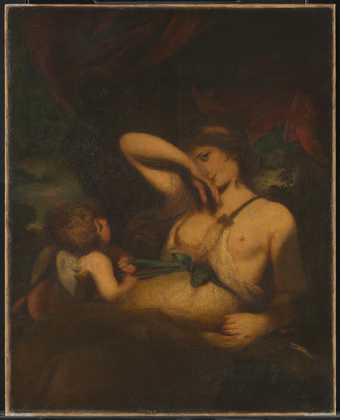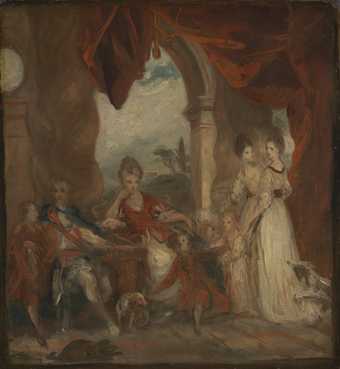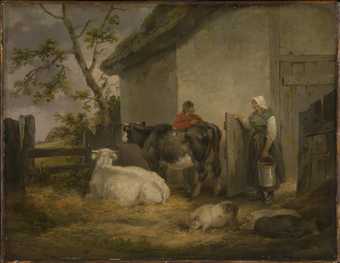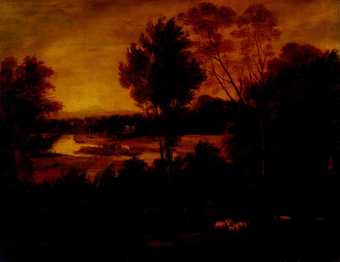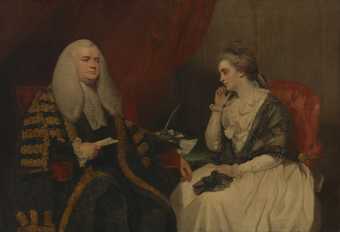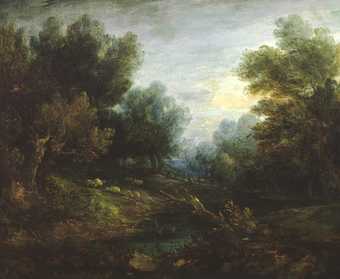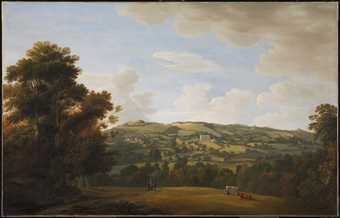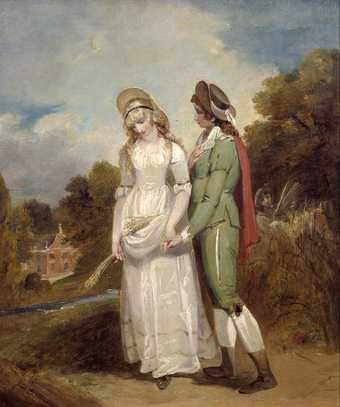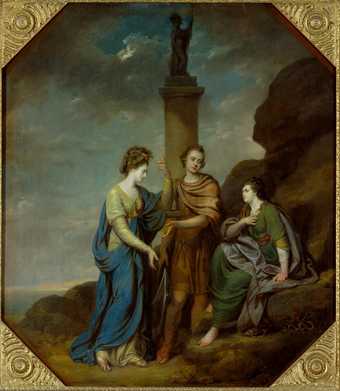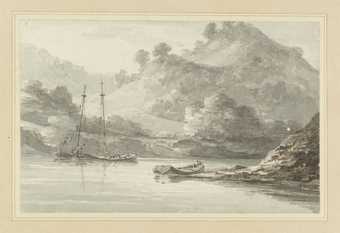
In Tate Britain
- Artist
- William Hodges 1744–1797
- Medium
- Oil paint on canvas
- Dimensions
- Support: 622 × 724 mm
frame: 838 × 965 × 82 mm - Collection
- Tate
- Acquisition
- Presented by the Friends of the Tate Gallery 1964
- Reference
- T00690
Display caption
William Hodges worked in India for six years, unusually receiving a salary from the East India Company. This landscape was probably painted while touring Bihar, a region he described as a ‘perfect paradise’. He romanticises the Indian countryside, depicting the Ganges winding through the lush landscape. The lone shepherd, Mughal tomb and ruins allude to the classical theme of death even in paradise. This seems poignant, as the area had been devastated by a famine in 1770. Worsened by Company involvement, 30% of the Bengal-Bihar population had died.
Gallery label, April 2023
Does this text contain inaccurate information or language that you feel we should improve or change? We would like to hear from you.
Catalogue entry
William Hodges 1744–1797
T00690 Tomb and Distant View of Rajmahal Hills 1782
Not inscribed.
Canvas, 24½ x 28½ (62 x 72.5).
Presented by the Friends of the Tate Gallery 1964.
Coll: Probably painted for Augustus Cleveland; sold in Calcutta; purchased as a Richard Wilson from a picture restorer by Dudley Wallis c. 1925–30; identified as Hodges by Colonel Grant; sold by Dudley Wallis at Christie’s, 24 July 1959 (45), bt. by Matthiesen; sold Sotheby’s, 20 November 1963 (129), bt. by Maas as ‘Extensive River Landscape in India’; purchased by the Friends of the Tate Gallery from the Maas Gallery for presentation.
Lit: W. Foster, ‘William Hodges, R.A. in India’ in Bengal Past and Present, XXX, 1925, pp.1–8; ibid, ‘British Artists in India’, in Walpole Society, LIX, 1930–31, pp. 40-41.
Repr: The Times, 30 September 1964.
Mrs. Archer of the India Office Library suggested that the scene might be a view of the hills of Rajmahal and river Ganges in Bihar. A picture entitled ‘Tomb and distant view of Rajmahal Hills’ was among the twenty-one works by Hodges which were sold in Calcutta in 1794 with the effects of Augustus Cleveland after his premature death in 1784. Hodges accompanied Warren Hastings on his journey to Benares in 1781 and on the way back stopped in January 1782 at Bhagalpur and stayed about four months with the collector and magistrate Augustus Cleveland, who patronised him as lavishly as Hastings had done. In his Travels in India, 1793, ch. V, pp.86–9, Hodges describes the journeys he undertook with Cleveland in the Rajmahal district and the various monuments they visited. Many of these figure among the titles of the pictures by Hodges in the Cleveland Collection listed by W. Foster, 1925, from the Calcutta Gazette, 9 January 1794. Mrs. Archer, who knows the district well, thinks that the title suggested above is the only one which seems to fit the picture. The scene cannot be connected with any of the other exhibited or known works by Hodges, but it has not been possible to discover how and when T00690 came from India to London.
Published in The Tate Gallery Report 1964–1965, London 1966.
Explore
- architecture(30,960)
- cities, towns, villages (non-UK)(13,323)
-
- Bihar(1)
- India(166)
You might like
-
Joseph Mallord William Turner Morning amongst the Coniston Fells, Cumberland
exhibited 1798 -
Joseph Mallord William Turner View of Richmond Hill and Bridge
exhibited 1808 -
Sir Joshua Reynolds Mr Huddesford and Mr Bampfylde
c.1778 -
Sir Joshua Reynolds A Nymph and Cupid: ‘The Snake in the Grass’
exhibited 1784 -
Sir Joshua Reynolds Sketch for ‘The 4th Duke of Marlborough and his Family’
c.1777 -
Thomas Hand Cottage and Hilly Landscape
1797 -
George Morland Cowherd and Milkmaid
1792 -
Sir Joshua Reynolds The Thames from Richmond Hill
1788 -
Sir Joshua Reynolds Lord and Lady Ashburton
1782–7 -
Manner of Thomas Gainsborough Landscape: Sheep in a Woodland Glade
date not known -
Francis Towne Haldon Hall, near Exeter
1780 -
George Barret Senior River Scene with Watermill, Figures and Cows
date not known -
Henry Singleton Palemon and Lavinia
c.1792 -
Thomas Hearne Hills, Ships and River
date not known

